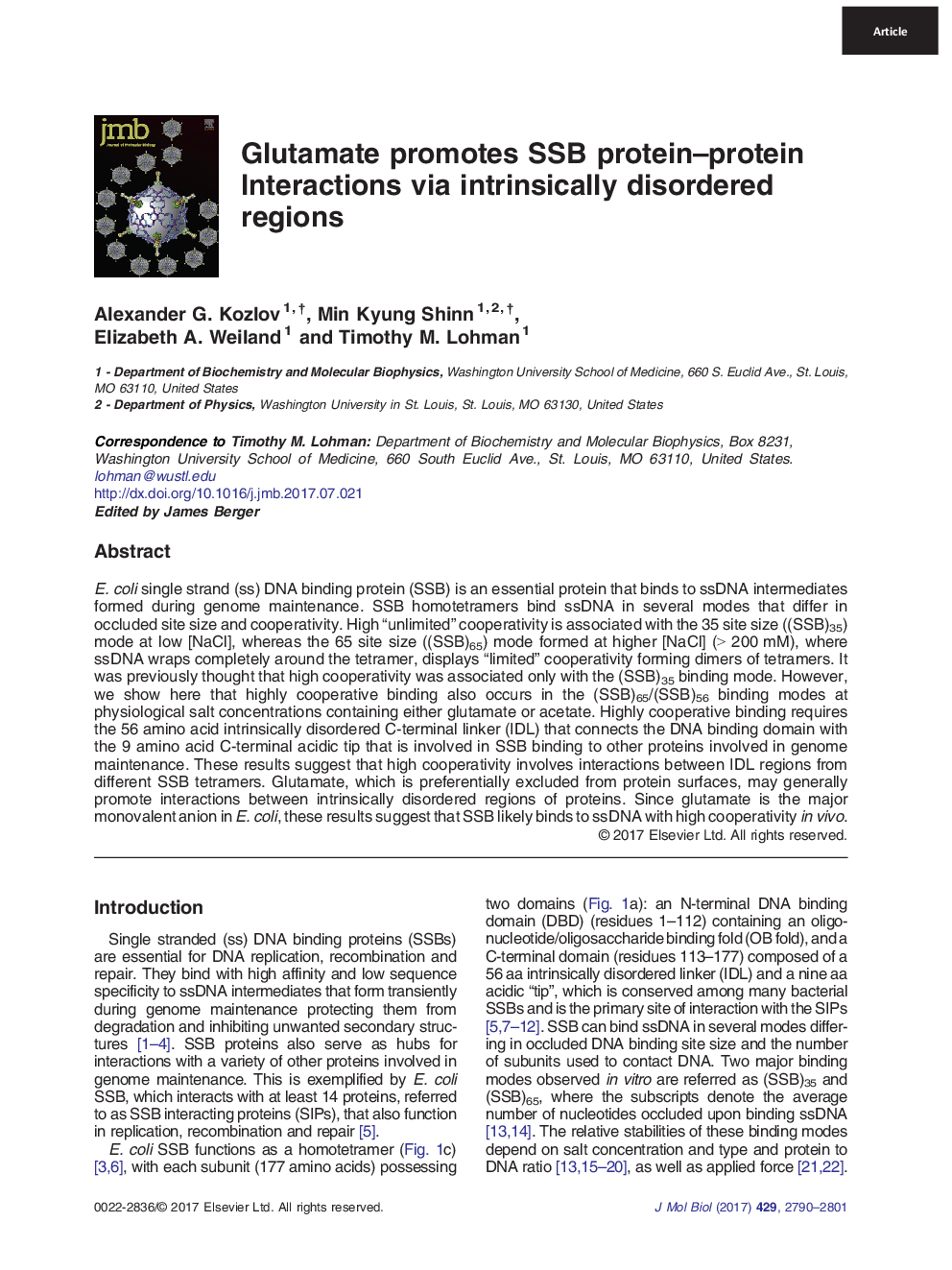| کد مقاله | کد نشریه | سال انتشار | مقاله انگلیسی | نسخه تمام متن |
|---|---|---|---|---|
| 5533148 | 1402103 | 2017 | 12 صفحه PDF | دانلود رایگان |

- Highly cooperative binding of E. coli SSB to DNA occurs at physiological salt concentrations when the buffer contains the physiologically relevant anion, glutamate.
- The SSB tetramers, even in the fully wrapped (SSB)65 mode, in which all DNA binding sites are occupied, can bind with high cooperativity.
- Cooperativity requires the intrinsically disordered C-terminal tails of SSB.
- Cooperativity appears to be due to direct interactions between the intrinsically disordered regions of SSB.
- SSB-ssDNA cooperativity is likely to be important in vivo.
E. coli single strand (ss) DNA binding protein (SSB) is an essential protein that binds to ssDNA intermediates formed during genome maintenance. SSB homotetramers bind ssDNA in several modes that differ in occluded site size and cooperativity. High “unlimited” cooperativity is associated with the 35 site size ((SSB)35) mode at low [NaCl], whereas the 65 site size ((SSB)65) mode formed at higher [NaCl] (> 200Â mM), where ssDNA wraps completely around the tetramer, displays “limited” cooperativity forming dimers of tetramers. It was previously thought that high cooperativity was associated only with the (SSB)35 binding mode. However, we show here that highly cooperative binding also occurs in the (SSB)65/(SSB)56 binding modes at physiological salt concentrations containing either glutamate or acetate. Highly cooperative binding requires the 56 amino acid intrinsically disordered C-terminal linker (IDL) that connects the DNA binding domain with the 9 amino acid C-terminal acidic tip that is involved in SSB binding to other proteins involved in genome maintenance. These results suggest that high cooperativity involves interactions between IDL regions from different SSB tetramers. Glutamate, which is preferentially excluded from protein surfaces, may generally promote interactions between intrinsically disordered regions of proteins. Since glutamate is the major monovalent anion in E. coli, these results suggest that SSB likely binds to ssDNA with high cooperativity in vivo.
208
Journal: Journal of Molecular Biology - Volume 429, Issue 18, 1 September 2017, Pages 2790-2801